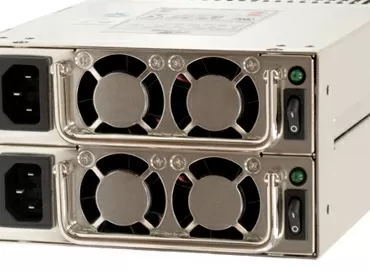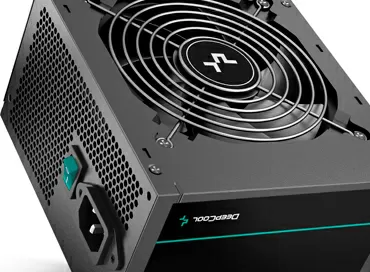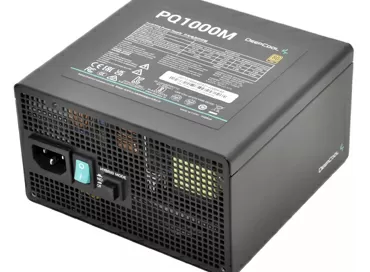What's new in ATX 3.0 standard power supplies - let's look at the example of Deepcool PX1200G
In the spring of 2022, Intel introduced a new ATX 3.0 power supply standard, which in the next decade will become decisive for motherboards, power supplies and video cards. The introduction of new power requirements was due to the ever-growing capacities of processors and video cards, as well as the introduction of the PCI Express 5 standard for expansion cards. Moreover, taking into account the trends of recent years, AI-function computing boards, such as Nvidia Tesla or Huawei Ascend, have been slowly added to voracious video cards. Since the ATX 3.0 standard has already been adopted, and power supplies with its support have appeared on sale, already today, when assembling a computer, it makes sense to put the ATX 3.0 PSU, so to speak, "for the future". In this article, we will look at how, from a constructive point of view, the new power supplies differ from the old ones using the example of the DeepCool 1200Wt model.
But first, a little bit about what's new in ATX 3.0
Of the most significant points, I would like to note the overload, which was finally regulated according to the standard. As it was before - in the specifications of the bus load, as a rule, the peak value was indicated, 10% higher than the nominal value, and it did not matter at all what exactly in the computer gives an increased load, for example, on the +12V bus - it could be both a video card and a processor. In the PCI Express 5 standard, long-term (over 1 second) power consumption through the new 12VHPWR connector is strictly limited to 600 watts, but within 0.01 seconds, a double excess of this value is allowed - 1200 watts, and within 0.0001 seconds - three times, 1800 watts. It should be emphasized here that a 3-fold short-term excess of the rated power is possible only for expansion cards conforming to the PCI-E-5 standard.
To power the video cards, a new 12VHPWR connector was introduced, which must be installed on a PSU with a power of 450 watts or higher. I want to note that today there are three video card power connectors: 6-pin (up to 75 watts), 8-pin (up to 150 watts) and the new above-mentioned 12VHPWR. For the first time in the power connector, signal cards for PCI-E 5 communication with the power supply have been added to the power contacts, so now the GPU can "negotiate" with the power supply about how much it can be loaded. The power supply, in turn, informs the video card of the power available on the 12VHPWR connector: 150, 300, 450 or 600 watts. So if the video card can consume more than the power supply can give, it will not try to burn it by overloading, but simply reduce its performance, adjusting to the capabilities of the PSU. This, of course, is ideal. In practice, the very presence of a new connector does not mean that the power supply or video card comply with the PCI Express 5 standard: there are adapters from old connectors to a new one, there are ATX 2.4 standard power supplies with a 12VHPWR connector, and GeForce RTX 3090 Ti and RTX 40 video cards, although equipped with a new connector, but they do not comply with the PCI Express 5 standard and are not able to "negotiate" with the power supply. And besides, there was information that the new 12VHPWR connector will soon be replaced with another, more adapted to high currents.
Of course, from the consumer's point of view, all this does not matter much: you can, as before, buy a more powerful power supply from a normal brand with the biggest guarantee, and count on the fact that the manufacturer has already provided everything and taken care of everything. However, from the manufacturer's point of view, the new requirements should affect the type of components used to ensure overloads. Is it so? Let's take a look at our subject.
Design features of the power supply unit
DeepCool PX1200G is built on the CSZ platform from the manufacturer CWT, and externally it does not differ from the ATX 2.4 generation of power supplies produced for DeepCool by Seasonic, except that the front grille used to be in the form of honeycombs, and now it is squares.
This is a CSZ platform from a not very well-known company CWT, used in many powerful ATX power supplies version 3.0. The design uses analog controllers for all circuits. The semi-bridge topology and the LLC resonant converter are located on the front side of the common board, and on the reverse side there is a synchronous rectifier with ten Infineon field-effect transistors for the 12V bus, and two VRMS for secondary buses.
The 135 mm cooling fan is manufactured by Hong Hua and uses a hydrodynamic bearing, and the fan itself is connected to a daughter board for controlling its speed, and a non-standard connector is used here, so in case of a failure of the cooler, it will be problematic to replace it. In the "hybrid" mode, the fan does not work at a load of up to 600 watts of 12 In the bus. With a load of 800 watts of 12 In the bus, the noise level is 36 dB, and over 950 Watts passes the threshold of 45 dB and becomes noticeably audible.
| Components on the front side of the board | |
|
Input filter |
4x Y-capacitor, 2x X-capacitor, 2x CM choke, 1x varistor |
|
Overcurrent protection |
1x thermistor SCK-207R0 (7 ohms) and relay |
|
Diode bridges |
2x WeEn WNB2560M (600V, 25A @ 127°C) |
|
APFS mosfets |
3x Infineon IPA60R099P6 (600V, 24A @ 100°C) 1x syncpower SPN5003 (to reduce no-load consumption) |
|
Boost converter APFC |
1x Cree C3D12065A (650V, 12A @ 150°C) |
|
Smoothing capacitors |
1x Nippon Chemi-Con (420V, 470mkF, 2,000h @ 105°C, series KMZ) 1x Nippon Chemi-Con (450V, 680mkF, 2,000h @ 105°C, KMZ) |
|
APFC Controller |
Champion CM6500UNX |
|
Resonant regulator |
Champion CU6901VAC |
|
Placement of elements on the board |
On the front side: APFC, half-bridge rectifier and LLC converter. On the reverse side: synchronous rectifier and DC converters |
There is a rather complex layout, especially compared to the ATX 2.4 standard power supplies, which seemed completely empty inside. Please note that the reverse side of the main board is actively involved in this platform.
| Components placed on the back of the board | |
|
Bus field effect transistors +12V |
10x Infineon BSC014N06NS (60V, 152A @ 100°C) |
|
+5V and +3 tires.3B |
DC converters: 2x UBIQ QN3107M6N (30V, 70A @ 100°C) 2x UBIQ QM3054M6 (30V, 61A @ 100°C) PWM Controller: uPI-Semi uP3861P |
|
Smoothing capacitors |
Electrolytic: 2x Nippon Chemi-Con (105°C, W) 2x Nichicon (2-5 000 h @ 105°C, HD) 1x Nichicon (5-6 000 h @ 105°C, HV) 1x Nichicon (4-10 000 h @ 105°C, HE) 1x Nippon Chemi-Con (2-5 000h @ 105°C, KZE) 1x Nippon Chemi-Con (4-10 000 h @ 105°C, KYA) 1x Rubicon (10,000 h @ 105°C, YXM) 1x Rubicon (4-10 000 h @ 105°C, YXF) Polymer: 10x FPCAP, 16x Nippon Chemi-Con |
|
Control chip |
Weltrend WT7502R (OVP, UVP, SCP, PG) |
|
Fan Controller |
Microchip PIC16F1503 |
|
Bus Rectifier +5VSB |
1x PS1045L SBR (45V, 10A) |
|
APFC Controller |
Champion CM6500UNX |
|
Resonant regulator |
Champion CU6901VAC |
Interestingly, some of the current-carrying tracks on the boards are additionally reinforced with copper tires.
Unfortunately, everything is standard for cables: during the existence of the ATX 2.4 standard, manufacturers of top-end power supplies have found a "golden mean" of conductor cross-sections and the number of connectors and blindly follow the foundations. All cables in DeepCool PX1200G are unplugable, to facilitate installation, yet they are black, faceless. There are no improvements like ferrite rings or capacitors here.
| Cables and connectors | |
|
ATX 20+4 (600 mm) |
1 piece, section 16AWG (1.31 sq.mm) |
|
4+4 Pin EPS12V (700 mm) |
2 cables with a cross section of 16AWG (1.31 sq.mm), a total of 2 connectors |
|
6+2 Pin PCIe (650 mm) | 3 cables with a cross section of 16 AWG (1.31 sq.mm), a total of 3 connectors |
|
12 + 4 Pin PCIe5 (650 mm), 600 W |
1 piece with a cross section of 16 AWG (1.31 sq.mm) for power conductors and 24 AWG (0.205 sq.mm) for signal |
|
SATA (500 + 150 + 150 + 150 mm) |
2 cables with a cross section of 18 AWG (0.823 sq.mm), a total of 8 connectors |
|
4 Pin Molex (500 + 150 + 150 +150 mm) |
1 cable with a cross section of 18 AWG (0.823 sq.mm), a total of 4 connectors |
From the configuration of the cables, it is not clear to me why there are so few connectors for connecting HDD - without adapters and disk baskets, no more than 8 SATA/SAS drives can be installed, that is, for a workstation with a large number of drives, you will have to invent something, and often such powerful power supplies are selected based on the highest efficiency in the range of 500-600 W for computers on a couple dozen HDD. But, for miners and extreme gamers who install 2 power supplies into a computer, there is a plug for starting the PSU without connecting to the motherboard. Only the "synchronizer" is missing.
Testing
When testing, the first thing we do is check the voltage output on the tires beyond the nominal value at various loads.
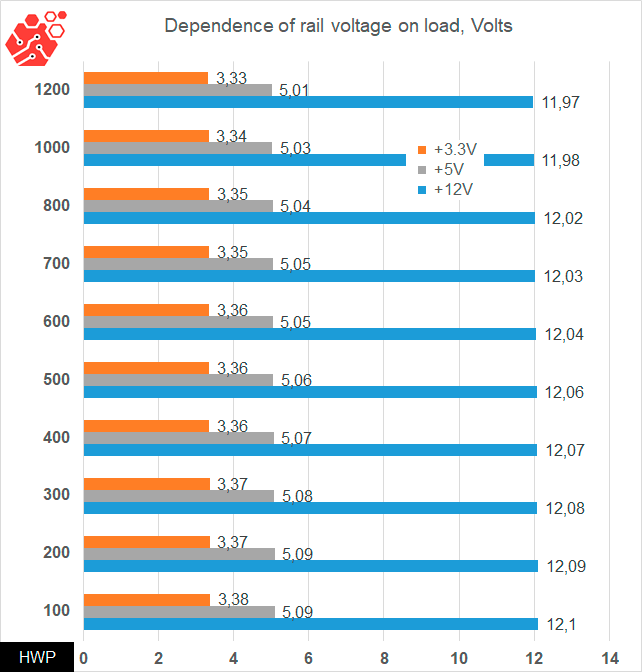
Linear voltage reduction is present, but is within acceptable values.
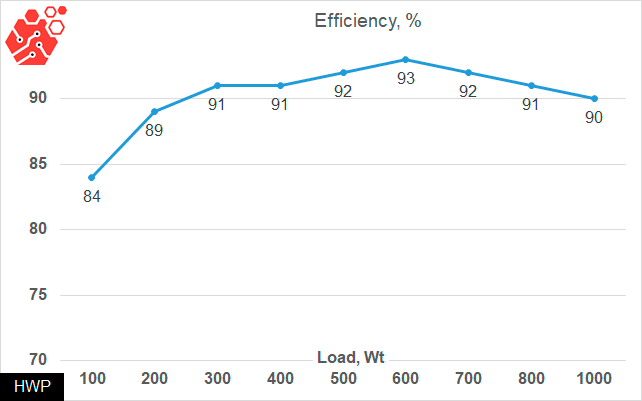
The highest level of efficiency is achieved in the region of 600 watts and is approximately 93%.
Conclusions
As you can see, modern ATX 3.0 power supplies are not just a reworking of the previous platform by installing more powerful components. Considering the overload inherent in the design, power supplies are a much more complex design, with a large number of daughter boards. And if under the sunset of the ATX 2.4 era, manufacturers have learned to keep the voltage level on the tires +3.3V and +5V stable regardless of the load, then again there is a slight gradient, which, however, is completely safe for the motherboard and electronics.
Of course, DeepCool PX1200G uses high-quality components, and as can be seen from our table, all capacitors are from the Japanese company Nippon Chemi-con, and transistors are mainly Infineon. This is typical for the top-end series of Deepcool power supplies, and this is already familiar to us, but if we talk about reliability, then in such devices it is achieved not only by the selection of components, but also by the simplicity of the design, according to the principle: "the fewer components, the less chance that they will fail." In this regard, of course, the BP industry has deviated from the generally accepted rules, although the reliability can be indicated by the fact that the manufacturer gives its PX1200G the same, famous 10-year warranty.
Michael Degtjarev (aka LIKE OFF)
03/07.2023

























